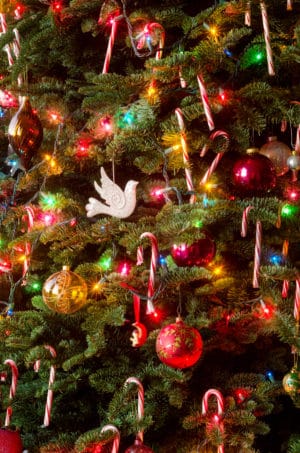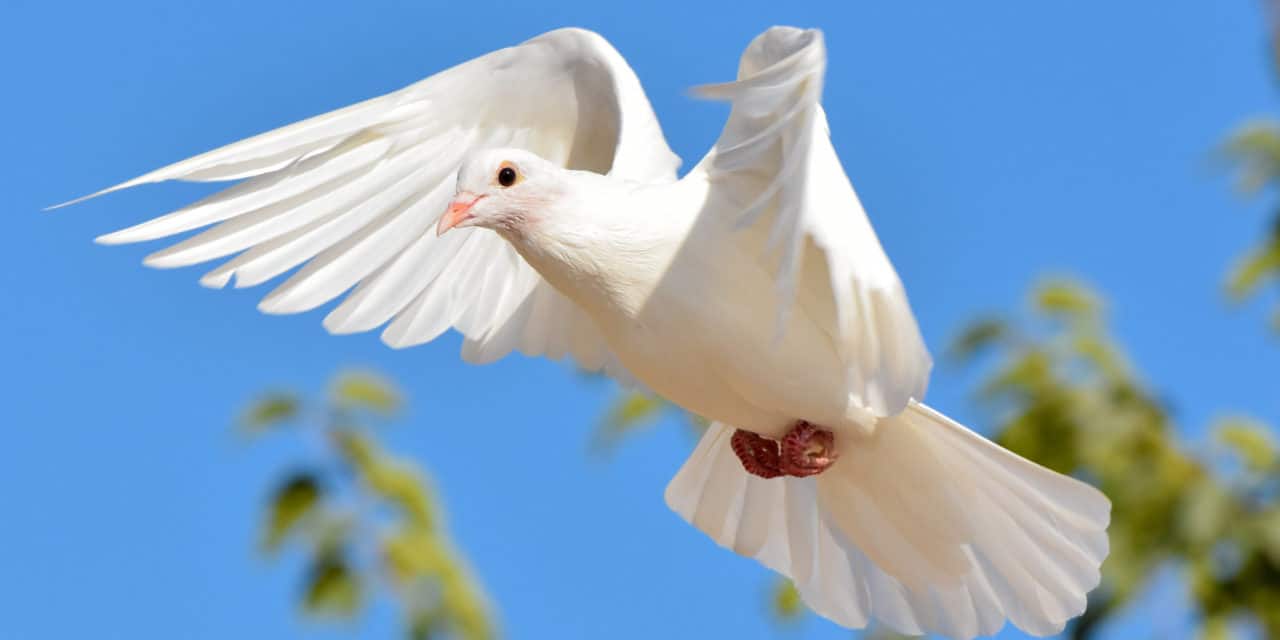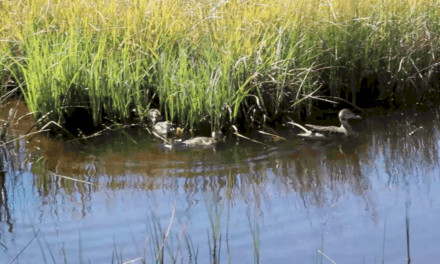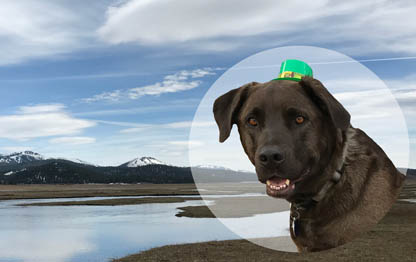By Melissa Wynn
Throughout history, the white dove has been a universal symbol of love, hope and peace making it a perfect addition to any holiday decor.
Often depicted with an olive branch, this fluttering color variation of the ring neck dove, lends a heartwarming touch of serenity and brotherhood to the spirit of the season.
White dove releases are popular for a variety of events including weddings and funerals. However the birds used for these events are most often white homing pigeons. Pigeons look very similar but are much stronger  long distance flyers than the delicate white dove that prefers to flutter about within a small area. After release homing pigeons instinctively return to their home aviary. True white doves would become lost and require capture. White doves are not wild birds and lack the survival skills required to protect and feed themselves.
long distance flyers than the delicate white dove that prefers to flutter about within a small area. After release homing pigeons instinctively return to their home aviary. True white doves would become lost and require capture. White doves are not wild birds and lack the survival skills required to protect and feed themselves.
The calm, gentle nature of the white dove makes them an excellent first pet for any bird enthusiast. Unlike the popular members of the parrot family, white doves are soft-billed birds that rarely try to bite. A bit of bonding effort is all it takes to have these birds eating out of your hand and becoming a loving companion. The tame nature and delicate beauty of these snow white beauties have made them a favorite addition to magic acts for centuries. With proper exercise time and a good diet, pet white doves can live up to 25 years and require less cage space than other domesticated birds their size. Easily trained, they tend to stick close to home and their human friends.
Although pure white is the most popular, domesticated doves are available in a wide variety of colors including gray, a beige blond and marbled black and white.
Doves are good parents and easy to breed. Mated pairs will quickly build a nest in a provided nesting place  within your dovecote. The male presents the building materials and the female builds a simple shabby nest. Each clutch consists of two eggs laid two days apart. Sitting the nest, and later the chicks, is shared by both parents. They rotate shifts and offer feeding breaks with a cooing and preening ceremony at swapping time. Chicks hatch in 17 days, blind and bald except for a fine yellow fuzz and move out of the nest after one short month.
within your dovecote. The male presents the building materials and the female builds a simple shabby nest. Each clutch consists of two eggs laid two days apart. Sitting the nest, and later the chicks, is shared by both parents. They rotate shifts and offer feeding breaks with a cooing and preening ceremony at swapping time. Chicks hatch in 17 days, blind and bald except for a fine yellow fuzz and move out of the nest after one short month.
Feeding their young is a specialized business for the fascinating doves. Both parents produce a nutrient rich substance in their crops to feed their squeaking young. This substance has been compared to the lactation of breast feeding mammals and is referred to as pigeon ‘milk’. Closely related pigeons and doves are part of a rare group of birds (the others being flamingos and male emperor penguins) to produce a milk-like substance to feed their young. This ‘milk’ is essential for the growth and development of the baby doves, and without it they would fail to thrive.
Whether they grace your Christmas decor or live in your own backyard, may the wondrous white doves bring hope, love and above all peace to you and yours this holiday season.












